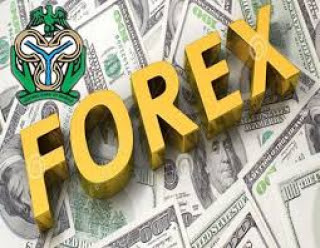Nigeria’s currency, the Naira slightly recovered in exchange value against the US dollar at the black market on Monday and traded at N753/$1 compared to the N755/$1 it traded on Friday.
According to information sourced from black market traders by our correspondent, the appreciation of the Naira at the parallel market was due to increased supply of US dollar in the market.
However, at the peer-to-peer (P2P) cryptocurrency FX exchange, the local currency exchanged at a minimum of N752.79/$1, representing 0.11% depreciation when compared to N751.99/$1 it traded in the morning hours last Friday.
It would be recalled that at the I&E official window, the Naira traded at N441.67/$1 on Friday representing 0.12% depreciation, when compared to N441.13/$1 it traded the preceding day.
In the day under review, the FX turnover at the I&E window dipped by 36.89% to $68.51 million on Friday from $108.56 million that it recorded on Thursday.
Also, Nigeria’s external reserve stood at $37.68 billion on Thursday, representing a depreciation of 0.09% when compared to $37.71 billion turnover of the previous day
Over the past years, the Central Bank of Nigeria (CBN) has been supplying dollars to FX traders at the official window and the licensed traders at the parallel market until recently when it suspended supply to Bureaux De Change (BDC) traders, in its efforts to achieve some stability in the currency’s exchange rate.
Despite the interventions the Naira has not improved in exchange rate value, trading at over N700/$1 over the past weeks in the parallel market as against the about N515/$1 it was trading before the withdrawal of FX supply by the apex bank to the BDC operators.
The apex bank discontinued the sale of FX to Bureaux De Change operators last year following speculations that some of them were engaging in round-tripping of the dollars supplied them to meet foreign exchange needs of customers.
The nation’s foreign reserve has not really grown over the past months, oscillating between $36 billion and $40 billion, due partly to the apex bank’s interventions, particularly the official market, to achieve some exchange rate stability for the local currency.
Analysts link the worrisome development to other factors, including the changing pattern of foreign trade especially as it relates to the global supply chain in recent months, institutional changes in the economy and structural shifts in production, amongst others.






